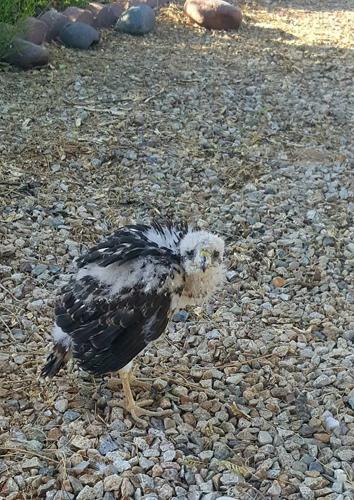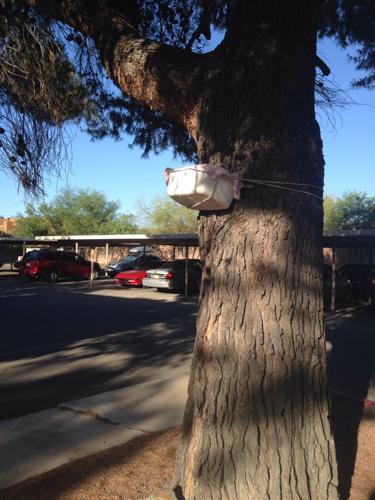With triple-digit temperatures in the forecast, Tucsonans can expect to see grounded Cooper’s hawks exercising annual “nest jumping” behaviors.
The process, known as fledging, involves young hawks jumping from their nests and learning to fly.
While some may be inclined to help the feathered, and sometimes fluffy, black and white birds, Arizona Game and Fish officials warn they are most often better off being left alone.
According to the Arizona Game and Fish Department, being grounded is a normal stage of development for Cooper’s hawks, and the parents will continue to feed their young on the ground until they learn how to fly.
Cooper’s hawks are also able to use their talons to go from branch to branch back up a tree if they chose to, the Game and Fish Department says.
Given the season, Arizona Game and Fish has received reports of homeowners being swooped by Cooper’s hawks — also part of the “nest jumping” season.
Before the young hawks leave the nest, the parents can be very protective, even dive-bombing humans or large animals passing below the nest in an effort to keep disturbances away from the area.
Once the young are on the ground, however, the protective behavior ceases giving people the mistaken impression the young have been abandoned, Game and Fish officials say.
“The young hawks are not in the danger that people think,” said local wildlife rehabilitator Kathie Schroder. “They sometimes fall victim to bobcats but are pretty safe from most everything except people and cars.
“They need to be raised by their parents so they can learn how to catch prey like other birds on the fly. People, even rehabbers, cannot teach them that. However, if one is actually injured, a rehabber can help.”
Evidence of an injured Cooper’s hawk includes the bird being more downy than feathered and not attempting to escape when approached.
Young hawks that have prematurely fallen from or have been blown out of their nests can be placed in alternate nests.
Alternate nests can be built by securely attaching a container like a milk crate or laundry basket to the tree where its nest is located or to a nearby tree providing shade.
Place an old soft towel in the bottom of the container, attaching it at about shoulder height.
Place the young hawk in the alternate nest and the parents will feed it.





